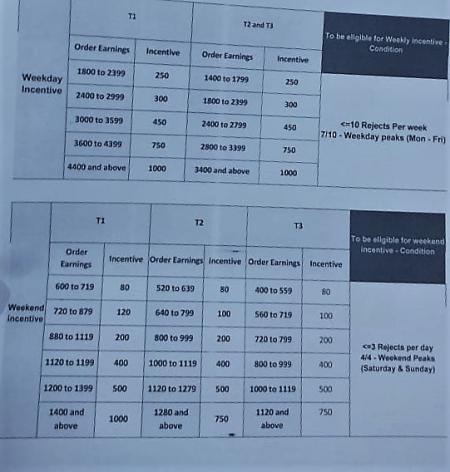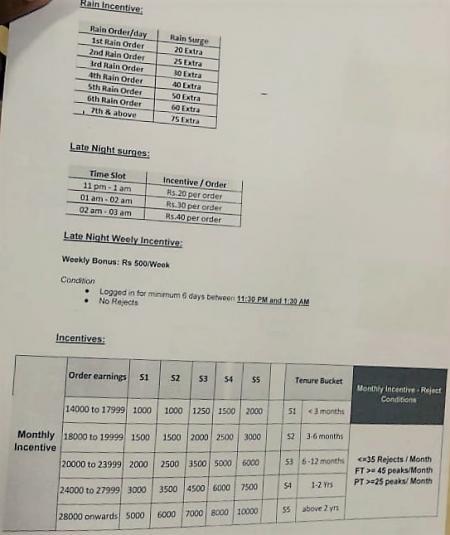The Trap of Incentives: The Story Behind Swiggy Delivery Persons’ Lightning Strike in Chennai

Image for representational use only. | Image Courtesy: Live MInt
CHENNAI: On December 5, people from parts of Chennai started tweeting about how their favourite online food ordering platform, Swiggy, failed them by not delivering food at their doorstep. One user even used the hashtag #leftstarving to express their dismay.
When hunger strikes #swiggystrikes . Got my order cancelled due to delivery executive strike in #Chennai . Anyone else ? @swiggy_in @SwiggyCares #left_starving
— Selva (@moghly) 5 December 2018
The problem was soon solved and the delivery system went back to normal the next day. And the average Joe’s concerns also went back to uncooked vegetables they got from the restaurant.
So, what happened in the couple of hours when the services of one of India’s top online food delivery start-ups, which has just raised $1 billion fresh capital, came to a standstill in a city like Chennai?
Why did Swiggy’s delivery staff go on a lightning strike? They were not mobilised under any banner, nor were any trade unions involved. (This millennial profession is yet to enter the working class struggles and unionisation). It was just a handful of delivery persons, in their trademark orange and black uniform, who just gathered in city corners and asked their company executives to give clarifications on their wage concerns
Their demands were simple. The salary of delivery staff had been reduced from Rs 36 to Rs 35 for the first four kilometres they covered. The delivery staff was protesting against this newly devised salary plan and against the unwarranted cut in their incentives for petty reasons. This, from a company, whose valuation has been estimated at $3.3 billion!
Dipping Wages
When the base rate of delivery was reduced, the workers initially didn't pay much attention to it. But after two days, they started realising that this Re 1 cut was making a huge difference in their total earnings. The daily wage started dipping by Rs 150-250, going up to Rs 1,000 over the week. Since the incentives are linked to delivery earning, this dip caused a real decrease in their earnings as well. This hurt the workers most.
“They (Swiggy) are not paying us for kilometres now,” Jai Ganesh, a Swiggy delivery person from Chennai told to Newsclick. “For example, if I go for 4.2 or 4.3 km for delivery, I should be paid Rs 38-40. But they are paying only Rs 35 now. Earlier, when we went long distance, say, 6 km, we got Rs 70. Now, this has reduced to Rs 50 to 60. They reduced the waiting fees, and all this was done without informing us. Earlier they paid us for fixed time. For example they used to pay us 10 rupees for 0-20 minutes. And for more than 20 minutes we got 20 rupees. Now they pay us per minute which goes to the maximum amount of ₹20. So now even if I waited in the restaurant for 40 minutes I don't get 40 rupee, I get 20 only.They also stopped taking account of the distance we go to before taking an order. They only calculate the final distance now,” said Ganesh.
Asked about Swiggy’s reaction to their protest, Ganesh said they had promised to look into the issues, which is why the staff went back to work.
Zipping through traffic jams in the sweltering heat or downpour, the food delivery staff, comprising mainly young boys, feel let down by the system.
“Sometimes the managers don’t respond to our queries in time. If I make call to them regarding issues I face en route delivery, it takes them about 20 to 30 minutes to respond. All we can do is call the customer care and wait for their instructions,” added Ganesh.
To understand the plight of the delivery staff, one needs to understand how the ‘Swiggy system’ is working. And how subtracting just Re 1 is making all the difference for the wages of the staff.
The ‘Sweet’ Trap of Incentives
It is not the delivery fee that is attracting a person to a delivery job in Swiggy, but the bait of ‘handsome incentives’ offered by the company.
Swiggy offers three types of incentives to a delivery person or ‘delivery partner’, as they term it. These are a week-day incentive, week-end incentive and a monthly incentive. The factors used to calculate these incentives are hours of work, earnings from each delivery and the number of rejects (of orders).
The tables given below (courtesy TN Labour) shows how the incentives are being calculated.


According to this table, to earn a week-day incentive, a person has to deliver seven out of 10 peak-time orders. The peak times are from 11 a.m to 3 p.m and 7 p.m to 11 p.m. To attain the maximum week-day incentive of Rs 1,000, a delivery person has to earn Rs 4,400 or more from delivery.
Since the delivery charges alone are never enough for a person to survive, this incentive system encourages them to work hard and for longer hours, letting go of their right to work eight hours, which was earned through long struggles, said sources in the know. What they don’t realise is that this ‘work hard, earn more’ is just another lie.
A detailed report published by TN Labour has calculated that a worker will have to work for 16.6 hours a day for 24 days a month, if he wants to earn the maximum incentives of Rs 14,000 (i.e Rs.7,000 monthly incentive + Rs.4,000 weekly incentive for four weeks + Rs 3,000 week-end incentive for four week-ends). If the rates are reduced, the working hours will increase to 18.7 hours a day.
For an entry-level worker, who works only for eight hours, the average wage will be Rs 14,760, including incentives. According to the TN Labour report, they will have to work at least 10 hours without break to earn the prescribed minimum wage of Rs 18,000 per month.
In a report published on August this year, Livemint has talked about how Swiggy has become the country’s fastest growing food tech platform. The report has attributed the firm’s success mainly on their focus in logistics. Unlike other food tech platforms, Swiggy has made sure since the beginning that they have their own fleet of delivery persons. This became a trend that other platforms also followed eventually. This shows how delivery persons are the backbone for this food tech giant and its success. Yet, they (delivery partners) are yet to taste any sweetness of this success story.
Get the latest reports & analysis with people's perspective on Protests, movements & deep analytical videos, discussions of the current affairs in your Telegram app. Subscribe to NewsClick's Telegram channel & get Real-Time updates on stories, as they get published on our website.
























